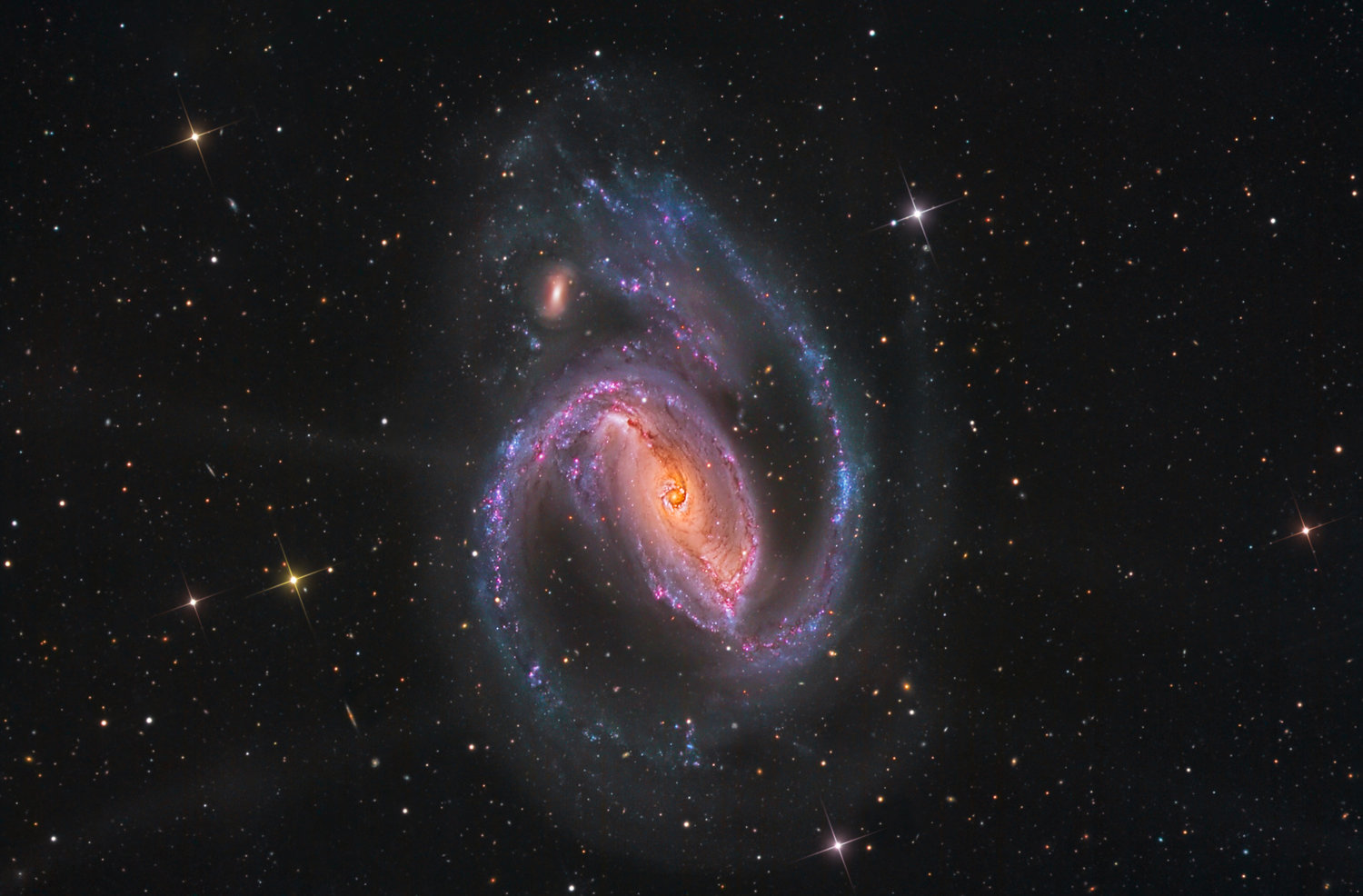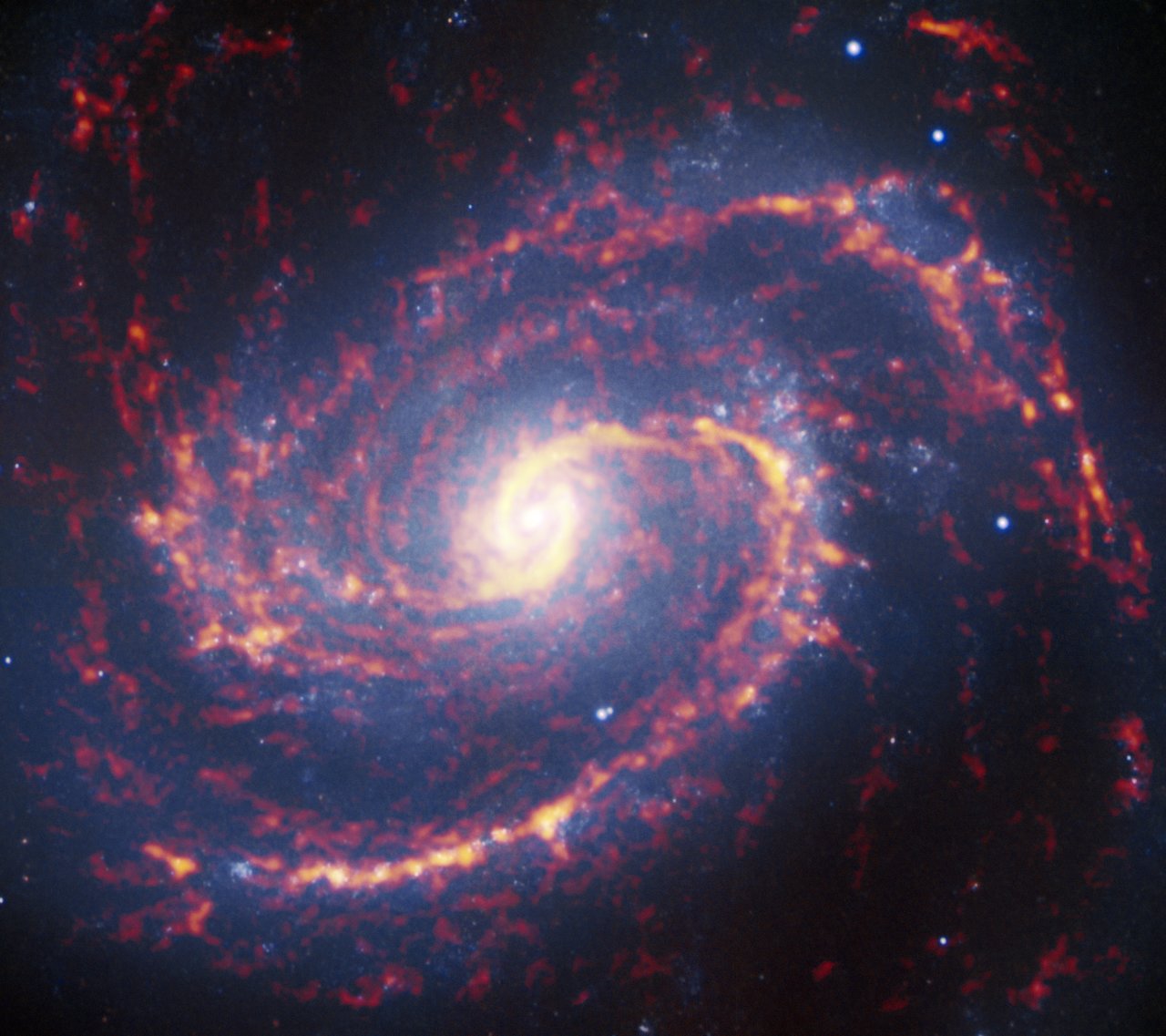See new, spectacular, or mysterious sky images.
-
bystander
- Apathetic Retiree
- Posts: 21592
- Joined: Mon Aug 28, 2006 2:06 pm
- Location: Oklahoma
Post
by bystander » Mon Apr 15, 2019 3:28 pm
Comet or Cluster?
ESA Hubble Picture of the Week | 2019 Apr 15
Most
globular clusters are almost perfectly spherical collections of stars — but
Messier 62 breaks the mould. The 12-billion-year-old cluster is distorted, and stretches out on one side to form a comet-like shape with a bright head and extended tail. As one of the closest globular clusters to the centre of our galaxy,
Messier 62 is likely affected by strong tidal forces that displace many of its stars, resulting in this unusual shape.
When globular clusters form, they tend to be somewhat denser towards the centre. The more massive the cluster, the denser the centre is likely to be. With a mass with almost a million times that of the Sun, Messier 62 is one of the densest of them all. With so many stars at the centre, interactions and mergers occur regularly. Huge stars form and run out of fuel quickly, exploding violently and their remains collapse to form
white dwarfs,
neutron stars and even
black holes!
For many years, it was believed that any black holes that form in a globular cluster would quickly be kicked out due to the violent interactions taking place there. However, in 2013, a black hole was discovered in Messier 62 — the first ever to be found in a Milky Way globular cluster, giving astronomers a whole new hunting ground for these mysterious objects.
This view comprises ultraviolet and visible light gathered by the NASA/ESA Hubble Space Telescope’s
Advanced Camera for Surveys.
Know the quiet place within your heart and touch the rainbow of possibility; be
alive to the gentle breeze of communication, and please stop being such a jerk. — Garrison Keillor
-
bystander
- Apathetic Retiree
- Posts: 21592
- Joined: Mon Aug 28, 2006 2:06 pm
- Location: Oklahoma
Post
by bystander » Mon Apr 22, 2019 3:40 pm
Blood Red
ESO Picture of the Week | 2019 Apr 22
This ESO Picture of the Week, captured by
ESO Photo Ambassador Petr Horálek, shows a bright
crescent Moon hanging above the
Chilean Andes, embedded in a blood-red sky that floods the frame with waves of deep crimson. Also seen here are a couple of the antennas belonging to the Atacama Large Millimeter/submillimeter Array (
ALMA), a state-of-the-art observatory that studies light from some of the coldest objects in the Universe.
The silhouetted duo of antennas are seen peering upwards, eager to begin their evening of stargazing — and impatient for the eye-catching ripples of cloud to clear. At an altitude of 5000 metres in the arid
Atacama Desert, clouds like these are relatively uncommon. The atmosphere in this region of northern Chile is incredibly dry and regularly leads to clear skies, offering around 300 cloudless nights per year!
ALMA has 66 individual constituent antennas, each of which can be moved very precisely around the vast
Chajnantor plateau to create a variety of configurations. When
working together they can produce much higher resolution observations of the cosmos than they can individually, and collectively they form the largest ground-based astronomical project in the world.
Know the quiet place within your heart and touch the rainbow of possibility; be
alive to the gentle breeze of communication, and please stop being such a jerk. — Garrison Keillor
-
bystander
- Apathetic Retiree
- Posts: 21592
- Joined: Mon Aug 28, 2006 2:06 pm
- Location: Oklahoma
Post
by bystander » Mon Apr 22, 2019 3:49 pm
Crowded Cluster
ESA Hubble Picture of the Week | 2019 Apr 22
This sparkling burst of stars is
Messier 75. It is a
globular cluster: a spherical collection of stars bound together by gravity. Clusters like this orbit around galaxies and typically reside in their outer and less-crowded areas, gathering to form dense communities in the galactic suburbs.
Messier 75 lies in the constellation of
Sagittarius (
The Archer), around 67 000 light-years away from Earth. The majority of the cluster’s stars, about 400 000 intotal, are found in its core; it is one of the most densely populated clusters ever found, with a phenomenal luminosity of some 180 000 times that of the Sun. No wonder it photographs so well!
Discovered in 1780 by
Pierre Méchain, Messier 75 was also observed by
Charles Messier and added to his
catalogue later that year. This image of Messier 75 was captured by the NASA/ESA Hubble Space Telescope’s Advanced Camera for Surveys (
ACS).
Know the quiet place within your heart and touch the rainbow of possibility; be
alive to the gentle breeze of communication, and please stop being such a jerk. — Garrison Keillor
-
Ann
- 4725 Å
- Posts: 13837
- Joined: Sat May 29, 2010 5:33 am
Post
by Ann » Sun Apr 28, 2019 12:04 pm
Color Commentator
-
bystander
- Apathetic Retiree
- Posts: 21592
- Joined: Mon Aug 28, 2006 2:06 pm
- Location: Oklahoma
Post
by bystander » Mon Apr 29, 2019 4:53 pm
Starbursts and Slow Burns
ESO Picture of the Week | 2019 Apr 29
This is one of 74 nearby galaxies whose stellar nurseries were recently observed by the Atacama Large Millimeter/submillimeter Array, or
ALMA, in an astronomical census called Physics at High Angular resolution in Nearby GalaxieS (
PHANGS). So far, around 100 000 of these stellar nurseries have been imaged in over 750 hours of observation.
ALMA’s remarkable sensitivity provides data at high enough resolution to study these regions in detail, and shows that some are bursting with new stars, while others evolve more gradually.
This anticipated diversity in
the process of how stars form was the motivation behind this enormous effort. There have long been theories that aimed to explain how and why these differences might occur, some involving the characteristics of the home galaxy itself — properties such as size, age, and internal dynamics — but our lack of high-resolution data had been an obstacle to testing them.
The vast quantity and variety of data yielded by PHANGS are already helping astronomers to understand more, even though the census is only a third complete. The project aims to observe a total of about 300 000 stellar nurseries and by the end it should significantly advance our understanding of how a galaxy’s properties influence the way in which it forms new stars.
Know the quiet place within your heart and touch the rainbow of possibility; be
alive to the gentle breeze of communication, and please stop being such a jerk. — Garrison Keillor








